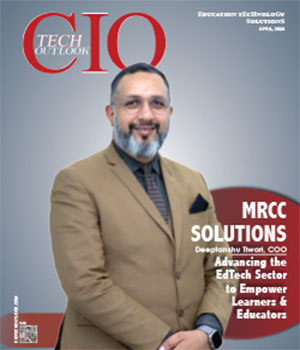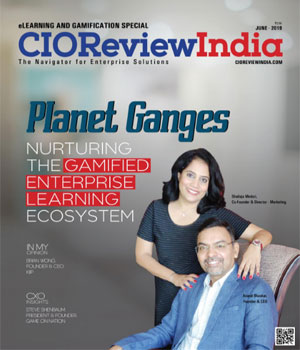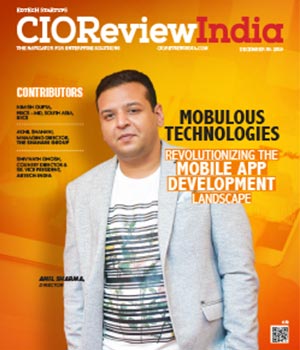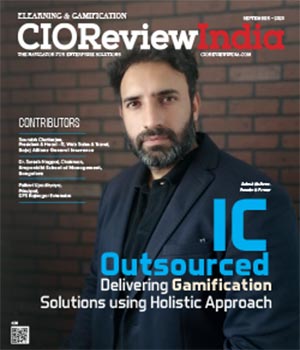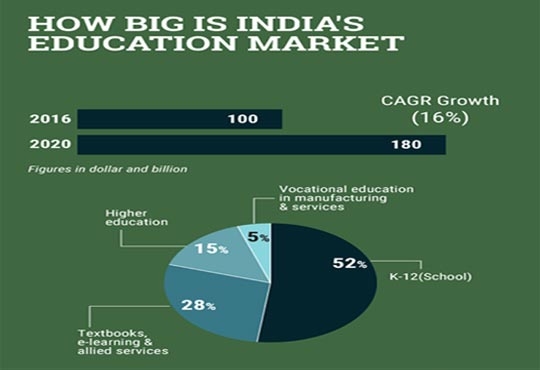
Bringing STEM Concepts to Life in the Classroom
Janifha Evangeline, Assistant Editor, CIOTechOutlook | Saturday, 20 April 2024, 12:31 IST

The STEM Education Center at WPI welcomed more than 120 visitors on April 6 for the STEM Education Showcase '24. A variety of educators participated in the event, including teachers from PreK-12 schools, representatives from community organizations, and students from the WPI Teacher Preparation Program. The event featured an engaging keynote speech on artificial intelligence (AI) delivered by Associate Professor Gillian Smith, followed by six interactive workshops (including one on AI led by Assistant Professor Yunus Telliel), a meditation session, a poster presentation session, a STEM Share-a-thon resembling a science fair, and multiple networking opportunities.
Introducing students to STEM concepts in the classroom is a dynamic process that goes beyond textbooks and lectures. It's about igniting curiosity, fostering creativity, and empowering students to explore the world through the lens of science, technology, engineering, and mathematics. By bringing STEM concepts to life, educators aim to cultivate a deeper understanding of these disciplines while preparing students for the challenges and opportunities of the future. Through hands-on experiments, real-world applications, and collaborative projects, students actively engage with STEM concepts, discovering their relevance and practical implications. Inquiry-based learning encourages critical thinking and problem-solving skills as students investigate phenomena and seek solutions. Technology integration provides interactive tools and resources that enhance learning experiences and reflect the dynamic nature of modern STEM fields. In this article, let us look at how educators and educational institutions can bring STEM concepts to life in the classrooms.
Simulation
By offering opportunities to manipulate the actual & virtual environments, simulation tools support STEM learning. Students can develop their understanding of STEM subjects & enhance the skills which are fundamental to the discipline. Simulation is often built with an underlying model which is based on a few real-world behavior or natural/scientific phenomena which includes models of the ecosystem. In the STEM industry, real equipment would not be easy to obtain therefore, simulation helps students to experience phenomena that usually would not be able to experience firsthand. For instance, simulation can replace laboratory equipment which may be either too expensive or dangerous to use in a school.
Based in Kishangarh Airport, Avyanna Aviation Academy has become known as one of the most advanced pilot training schools in the area, boasting top-notch education and cutting-edge simulation technology. Now, the school is expanding its options by adding a specialized ELITE PI-1000 Pro AATD.
Rene Huddlestone, director of Marketing & Sales at ELITE, said: “It has been a pleasure working with the Avyanna Aviation Academy to deliver this custom PI-1000 simulator. The school is one of the very best in India, and this latest device will help to ensure that their students are able to learn and practice their skills in a highly realistic and authentic environment.”
AR/VR
The future of learning & workplace training is connected to immersive learning training. Since technology becomes even ubiquitious & affordable, various types of extended reality are becoming accessible to educators & organizations. While AR when used on a smart device like a tablet, smart eyeglass or smartphone for projecting digital items, which include moving cartoon drawing onto the real image that is produced by the camera, VR creates a completely new digital environment which can be viewed in 360 degrees. Educators are aware that the learning process must be about motivation & interaction. By incorporating Augmented Realty & Virtual Realty content into lessons, lecturers can involve students in the tasks as well as provide them a wider and better understanding of a specific topic.
AR allows us to superimpose digital elements onto physical objects in the classroom. This can prove incredibly beneficial for making concepts more engaging and realistic in the classroom. For instance, Froggipedia provides a tactile augmented reality experience that guides students in examining the inner organs of a frog without the need for actual dissection.
“AI and STEM education are at the forefront of preparing students for the challenges and opportunities of the future. AI, in particular, is poised to revolutionise various industries, from healthcare to transportation, making it essential for educators to understand its principles and applications,” says Rajeev Tiwari co-founder of STEMROBO.
“Likewise, STEM disciplines form the foundation for critical thinking, problem-solving, and innovation, skills that are increasingly valued in today’s workforce,” he adds.
Gaming
Gaming as one of the instructional tool helps educators for creating participatory learning activities and assess understanding of complex as well as ill-formed situations. It also facilitates critical thinking & problem-solving capabilities & ensure active engagement throughout the learning continuum for all students. The main benefits of implementing games in STEM areas are twofold. Firstly – gaming is highly engaging, hence, parents & teachers can harness the children’s interest & steer it toward subject-based learning. Secondly, video games need a huge amount of STEM knowledge to develop, and this makes them a natural hook for teaching coding & various other computer skills. A well-designed video game puts the player in control, provide incremental levels of difficulty and offer instant & ongoing feedback and create community by allowing for multiplayer participation. Also, self-directed exploration & pacing, coupled with regular feedback & collaborative problem solving are already part of effective learning & teaching.
“Education is still a must, but the gamification of the product could be a game changer,” said Francois Albessard, the owner and CEO of Traders Education. His comments were made while demand for trading-related educational content was increasing.
Educators require assistance in promoting STEM education. Furthermore, it is essential to establish environments where students have the opportunity to study STEM subjects. This involves introducing students to the concepts, vocabulary, and experiences that come with engaging in effective and age-appropriate STEM activities, and training their teachers to assist in this effort. Getting students involved in STEM activities early on can help set the stage for future success in STEM education. Technology can help achieve this objective, but it requires significant effort to ensure that access is available to a large number of people.
CIO Viewpoint
Cloud Enabled Edtech Spaces Enriching Learning...
By CIOTechOutlook Team
Challenges and Issues of Online classes
By R. Chandran, Chief Information Officer, Bahwan Cybertek
Educational Technology, Digital Learning In The...
By Swati Sankhye, Chief Information Officer, MIT World Peace University
CXO Insights
Optimon: Smart Manufacturing Solutions...
By Srinivas Kallakurchi, President & Chief Strategy Officer
Education Should Be A Want And Not A Need
By Dr. Prem Das Maheshwari, Business Director, South Asia, D2L
Current Industry Trends In Education


